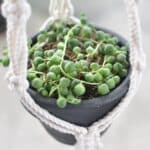Spring flowers are functional in more ways than one. They are essential for pollinating agents like butterflies and bumblebees as they produce nectar that pollinators, who stay hidden all winter long, seek.
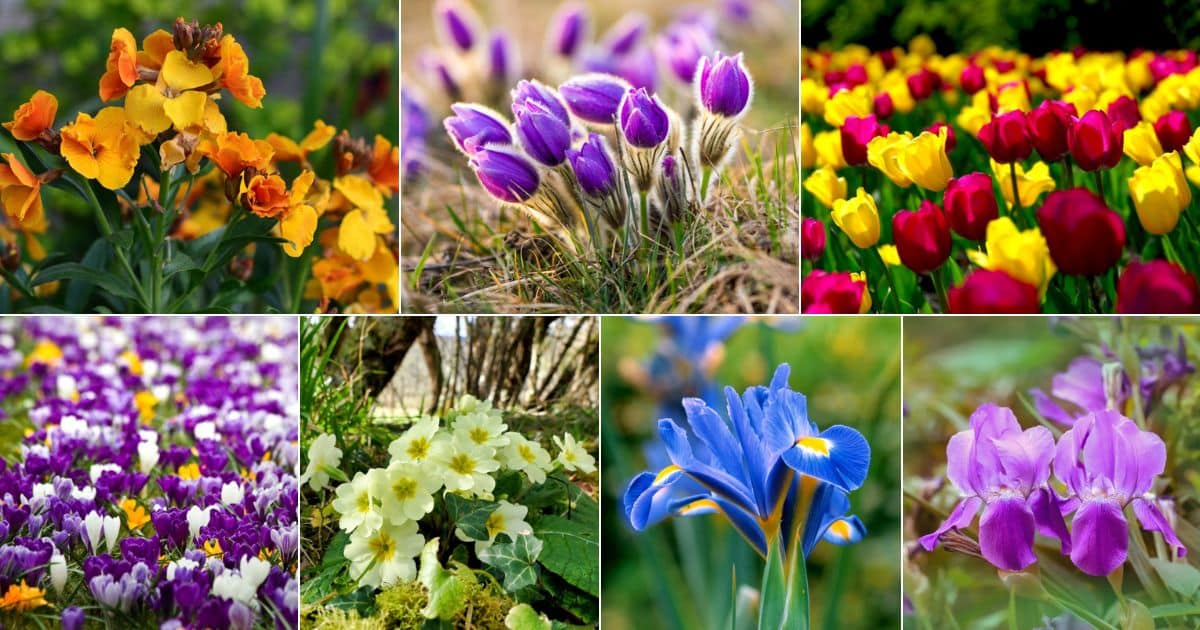
Additionally, seasoned gardeners use spring flowers as an indicator as they await an increase in temperature.
Below is a compilation of the best flowers that bloom in spring.
Jump to:
- Best Flowers That Bloom In Spring
- 1. Crocus ‘Crocus tommasinianus’
- 2. Hyacinth ‘Hyacinthus’
- 3. Forget-me-nots ‘Myosotis Sylvatica’
- 4. Lungwort ‘Pulmonaria’
- 5. Wallflowers ‘Erysimum’
- 6. Reticulate Iris ‘Iris recticulata’
- 7. Pasque flower ‘Pulsatilla’
- 8. Tulips ‘Tulipa spp.’
- 9. Daffodils ‘Narcissus spp.’
- 10. Primrose ‘Primula vulgaris’
- 11. Snake’s head fritillary
- 12. Snowdrops ‘Galanthus spp.’
- 13. Bearded Iris ‘Iris germanica’
- 14. Hellebores ‘Helleborus spp.’
- 15. Heather ‘Erica spp.’
- 16. Grape hyacinth ‘Muscari’
- 17. Winter Aconite ‘Eranthus hyemalis’
- 18. Foxgloves ‘Digitalis’
- 19. Lily of the Valley ‘convallaria majalis’
- 20. Allium ‘Allium spp’
- Conclusion
Best Flowers That Bloom In Spring
1. Crocus ‘Crocus tommasinianus’
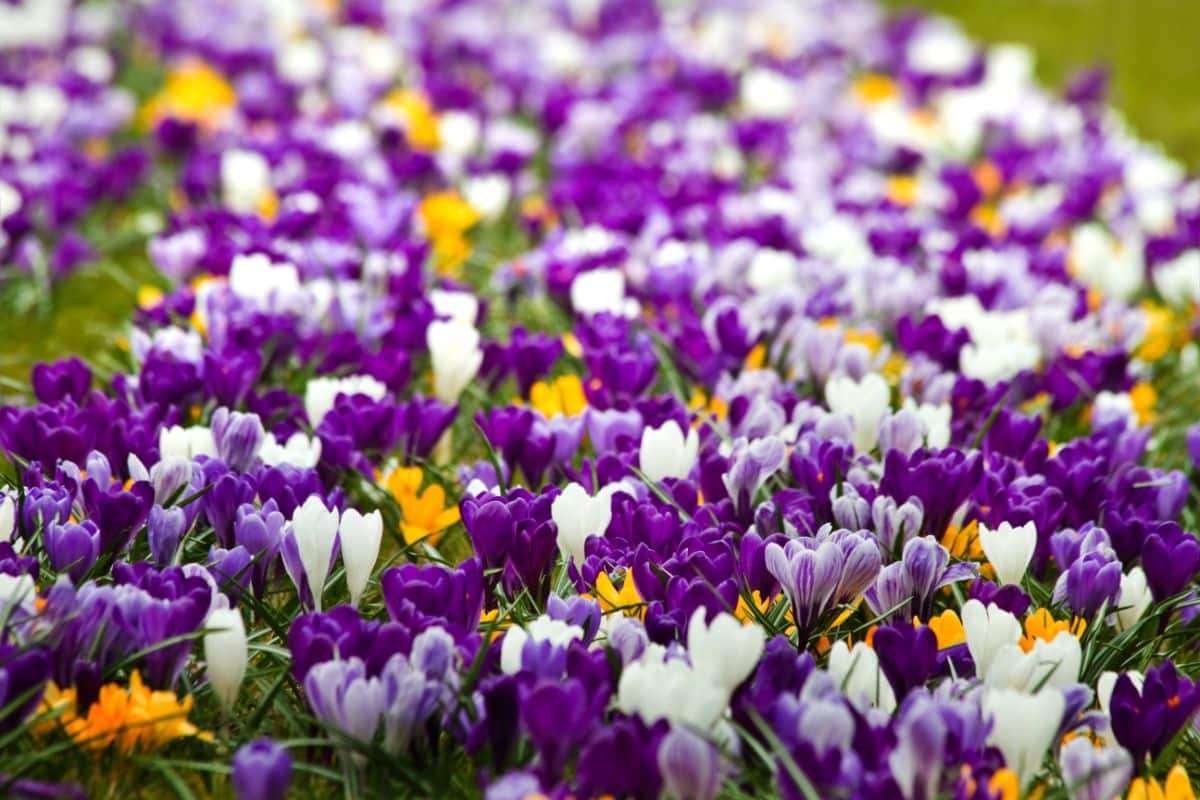
Crocuses are cheerful spring flowers. They evolve fascinatingly from bulb-like corms to beautiful blooms of bright purple or yellow and white if you go for that color variety.
The ideal time to plant the crocus is autumn, which should be done in moist but well-drained soil, preferably in pots on their own.
Ensure that you also provide it with total sunlight exposure.
An added benefit of this plant is the surplus pollen they generate for early bumblebees.
Crocus has a height and width size of 15cm. They flower from February all through April.
2. Hyacinth ‘Hyacinthus’
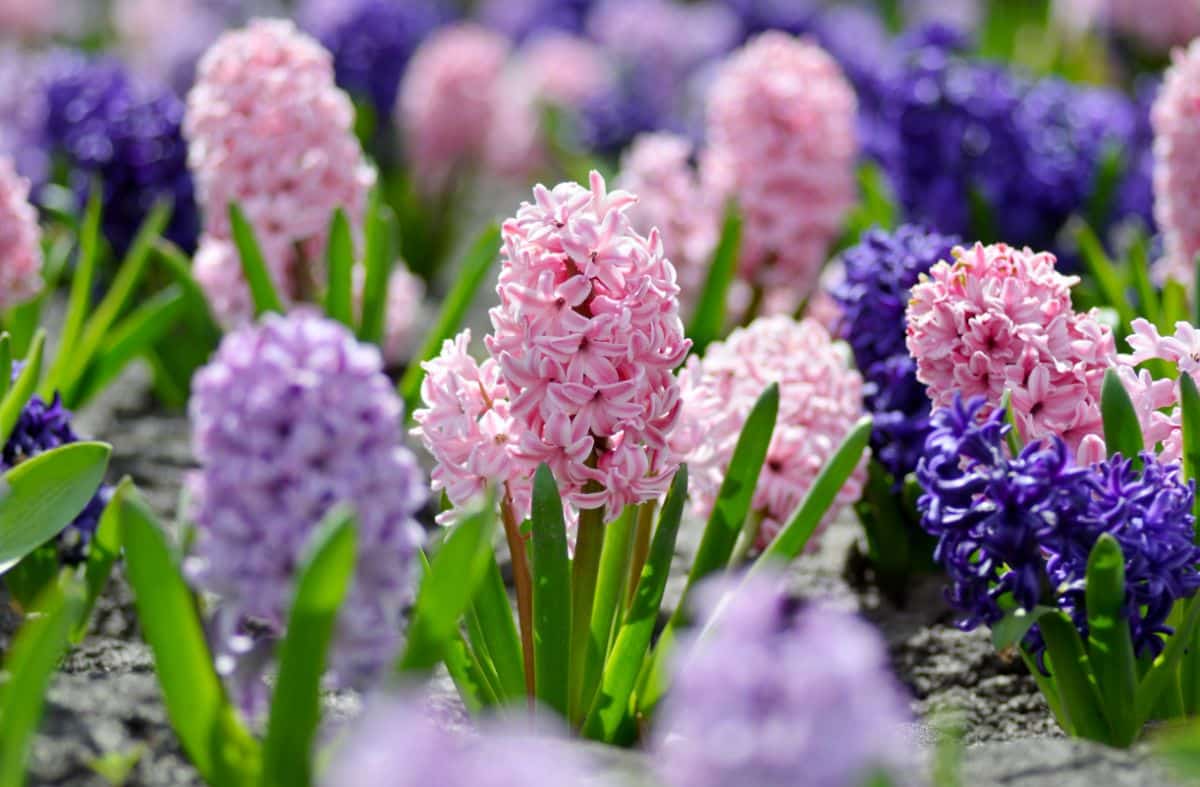
Hyacinth plants might not be all that great-looking, and that explains why they are being relegated to the background these days, but they make a beautiful pot display.
The plant blesses your garden with its fragrant leaves and mild scent very early in the year.
They require well-drained and moist soil to grow well, plus total sun exposure.
Hyacinths which come in pink, white, and purple, have a mature height size of 25cm and a spread of about 10cm
Flowering period: March - April.
3. Forget-me-nots ‘Myosotis Sylvatica’
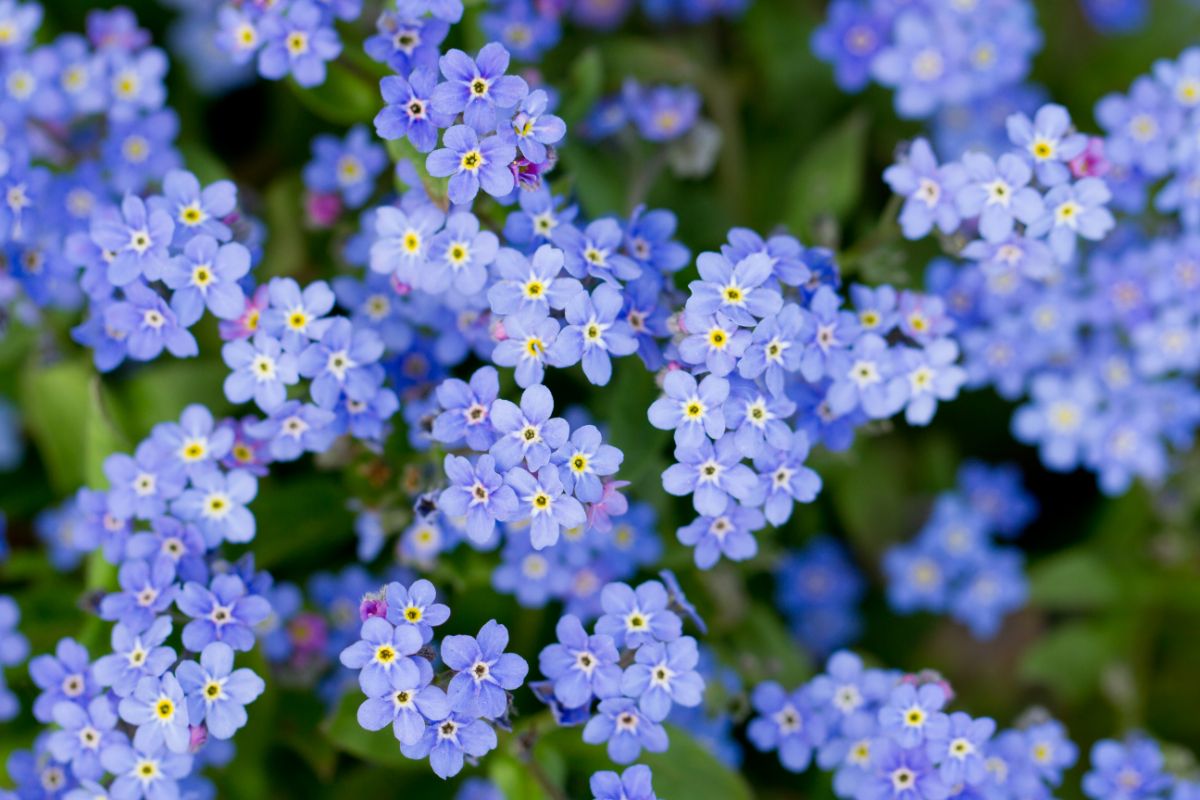
This plant has a fair slice of benefits and downsides.
Forget-me-nots readily self-seed, transforming your space into a paradise when planted alongside daffodils or tulips.
However, these low-growing plants are bound to look untidy after flowering, which might warrant you taking them out and growing something else in their stead.
Well-drained soil and partial shade are the perfect combination of growth conditions to see them thrive well.
Forget-me-nots have a mature size of 20cm and a spread of 15cm. They are likely to flower from April - June.
4. Lungwort ‘Pulmonaria’
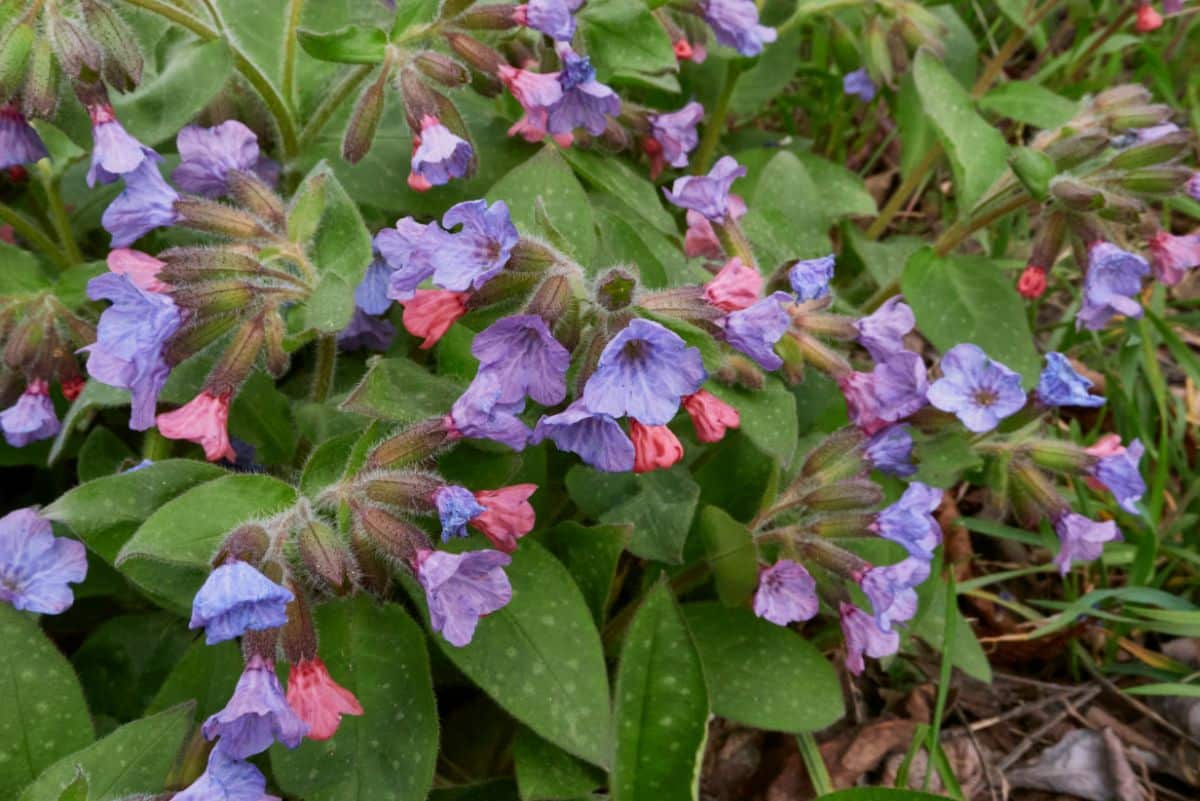
A feature that sets this lovely perennial apart from most spring flowers is that they are more shade tolerant.
The way the plant lights up your garden in spring makes them a top choice of spring flowers.
You get the best of this flower in spring-like visual effects when you plant them with forget-me-nots and primroses.
The herbaceous flower is available in pink or purple colors. They have a mature height size of 35cm and a spread of about 45cm.
Fun Fact: the name ‘lungwort’ was inspired by markings that people likened to diseased lungs on the plant leaves.
5. Wallflowers ‘Erysimum’

Gardeners prefer wallflower Erysimum for spring bedding.
The beautiful dark red and yellow flower gives quite the show in spring. They love moist but well-drained soil and full sun to partial shade exposure.
Wallflowers have a mature height and width size of 50cm, respectively, and flower from March - April.
Quick Tip: Wallflowers being biennial plants, are ideal for planting late spring for them to be mature enough to flower the following spring. Alternatively, you can bare-root wallflower variety and plant it in Autumn.
6. Reticulate Iris ‘Iris recticulata’
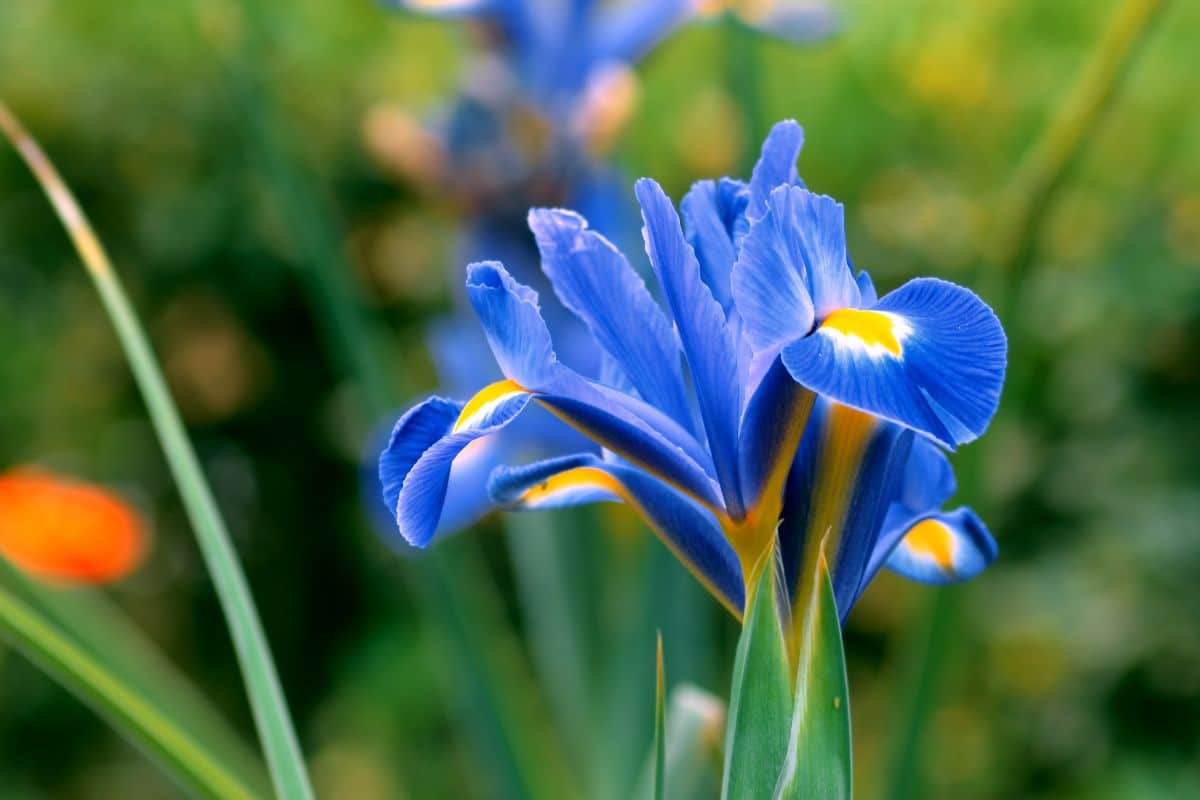
The recticulate Iris is an adorable compact plant growing not taller than 15cm.
The plant has got tender-looking bright purple flowers with beautiful contrasting yellow markings.
They make perfect pot plants and look astonishing when placed by the window sills.
Recticulate Iris has a height and spread size of 15cm and flower long from January - April.
7. Pasque flower ‘Pulsatilla’

Traditionally, the pasque flower symbolizes Easter. They are late spring flowers that brighten your space with their smooth star-like flowers and lovely foliage.
Pasque flower thrives best in well-drained soil and prefers total sun exposure.
They have a mature height and spread size of 20cm, respectively, and flowers from April - May.
8. Tulips ‘Tulipa spp.’
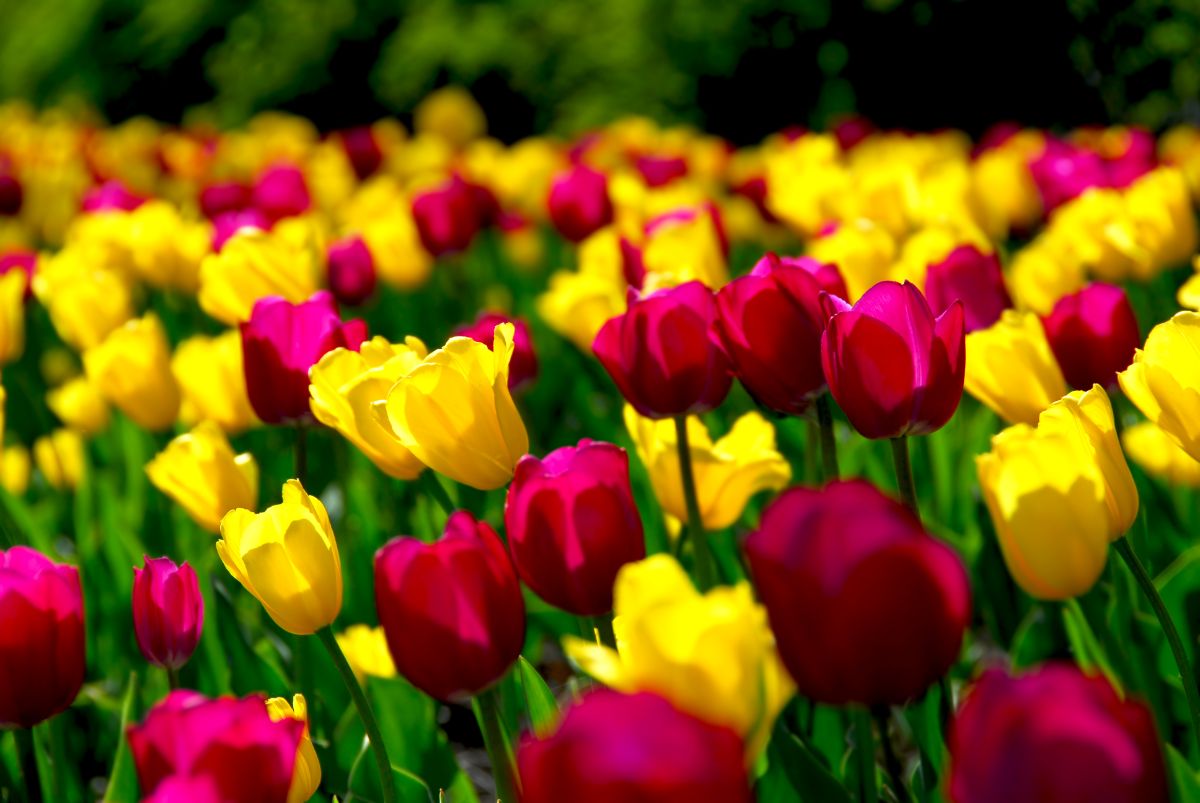
Tulips are widely adored spring pots and border display flowers. They leave you spoilt for choice with their various colors, shapes, and sizes.
However, a downside to this plant is the fact that they are not good attractors of pollinators, but the brightly colored variants do make your garden come alive.
Tulips thrive best in moist but well-drained soil and prefer total sun exposure. They have a mature height size of 45cm, a spread of 25cm, and flowers from April to May.
9. Daffodils ‘Narcissus spp.’
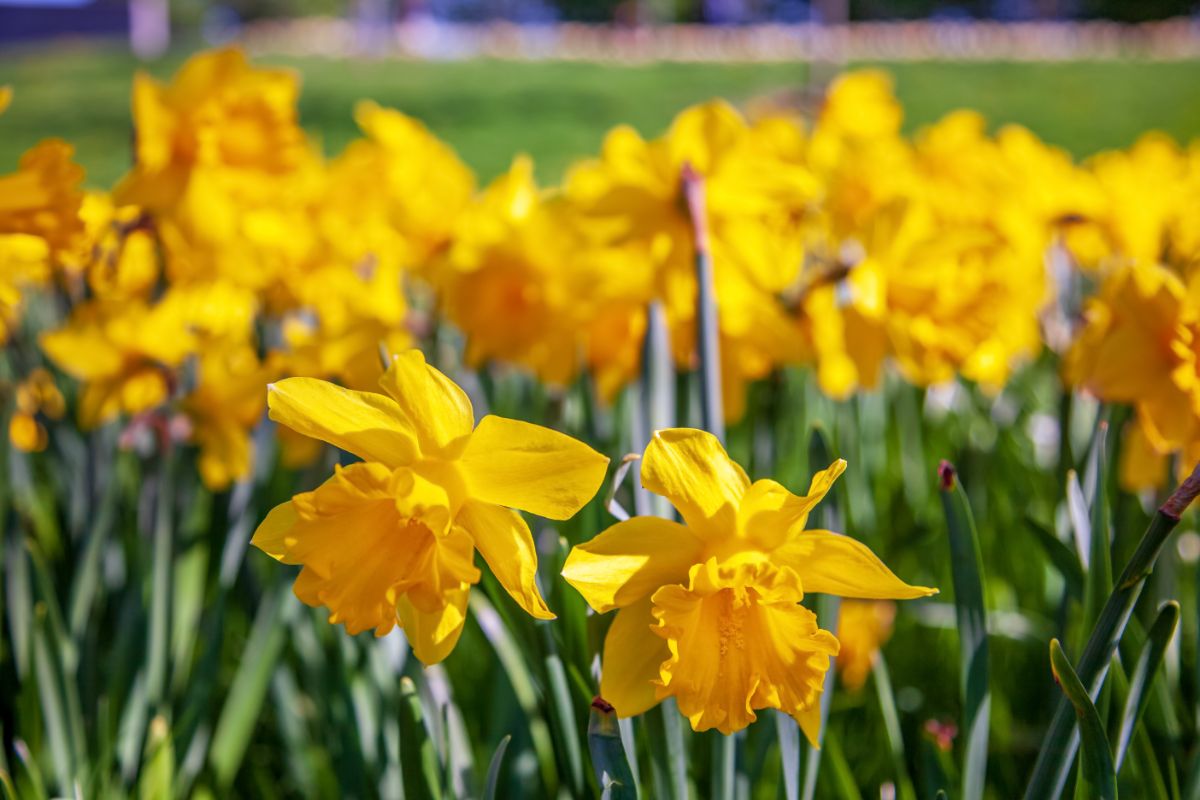
Our list would be incomplete without this popular spring plant.
Daffodils give a perfect representation of what a spring garden should look like. They are sturdy plants with bright yellow flowers that bloom even in the most unpleasant conditions.
No matter your needs, there is a daffodil variety that is sure to suit them.
You have the privilege of choosing between the tall or dwarf ones, early or late blooming varieties, white or pink varieties, etc.
Regardless of the specie you go for, ensure it is planted in moist but well-drained soil, either in pots or ground, and allow you to enjoy full sun.
30cm is their mature height with a spread of just about 5cm.
10. Primrose ‘Primula vulgaris’
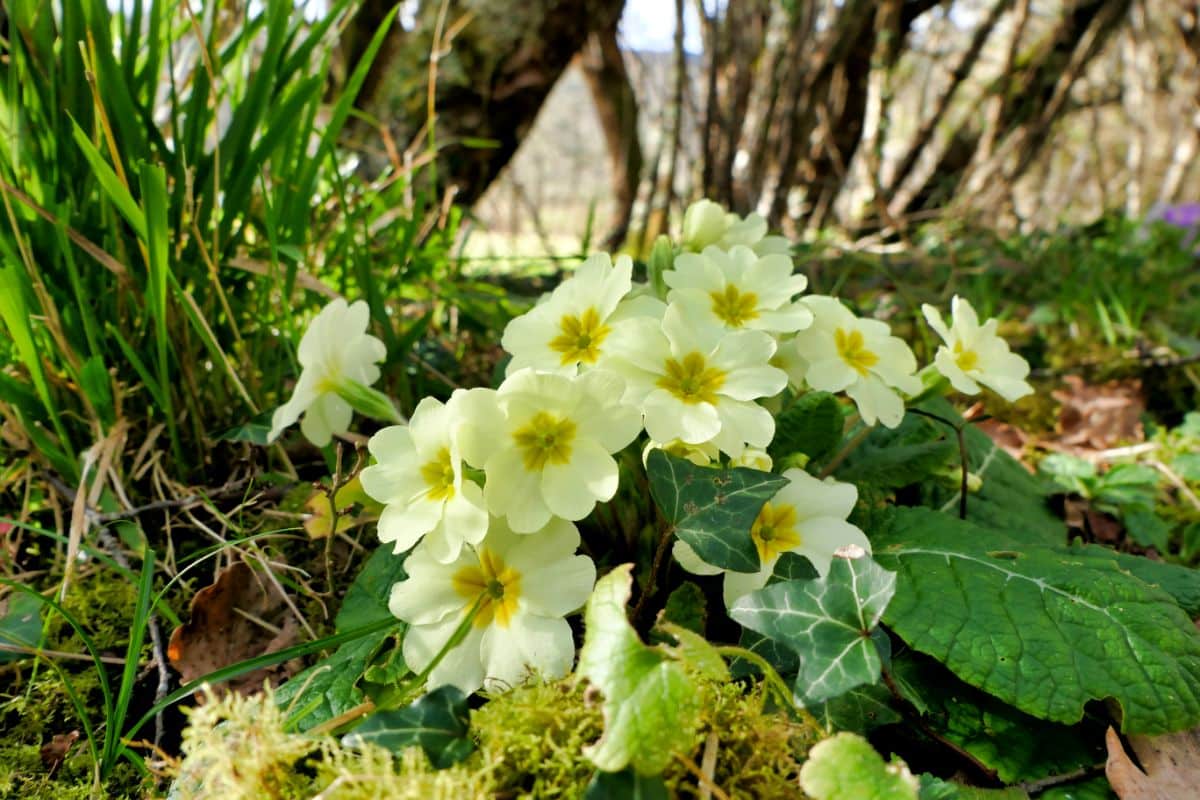
We particularly love the fresh greenish leaves and soft yellow blooms of this plant.
Primroses are native to the British. They have a habit of self-seeding and can, over time, be divided and replanted for a more lavish display.
Moist soil and partial shade are critical to their tremendous growth.
The plants have a mature height size of 20cm and a more extensive spread of 35cm.
Quick Tip: A collaboration of primroses and other spring flowers like forget-me-nots or snowdrops would result in a breathtaking display.
11. Snake’s head fritillary
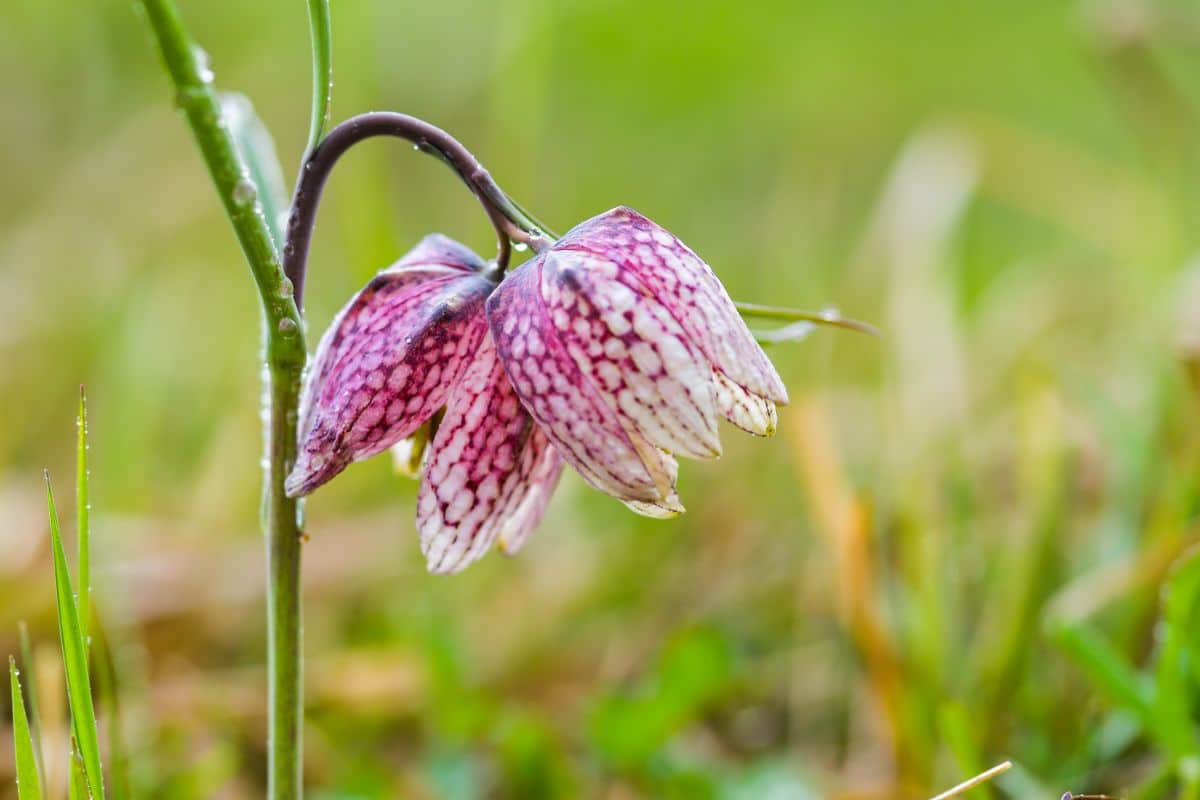
SHF, as we like to call it, is one lovely spring flower to consider.
From the stable of the Lily family, they are in the form of a bulb with patterned flowers in radiant shades of pink and mauve.
SHFs love moist soil and prefer partial shade exposure. They flower from March - April and have a mature height size of 35cm and a spread of 45cm.
12. Snowdrops ‘Galanthus spp.’
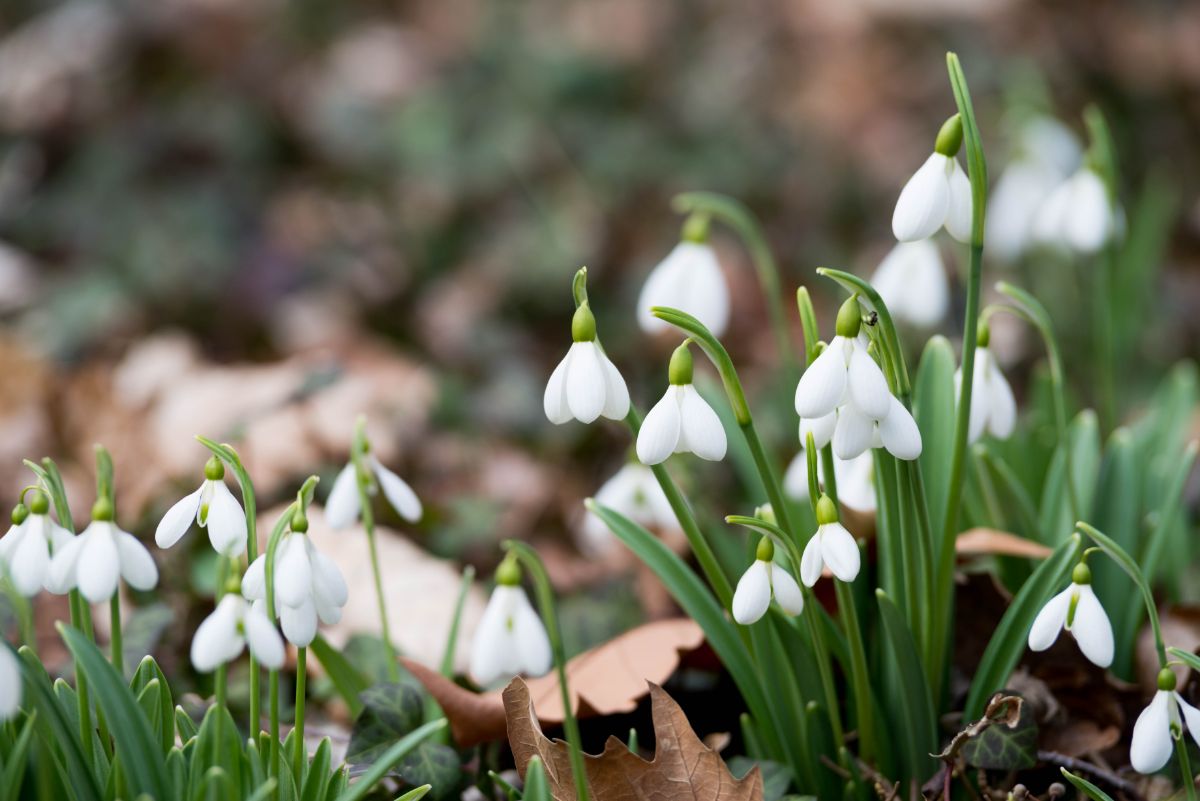
Snowdrops are categorized as early-blooming spring flowers; in fact, they seem to top the list with a record of flowering as early as January.
Like primroses, snowdrops would, over time, grow into clumps which can then be divided and replanted.
Snowdrops flower from January - March. They have a height size of 12cm and a 5cm spread.
13. Bearded Iris ‘Iris germanica’
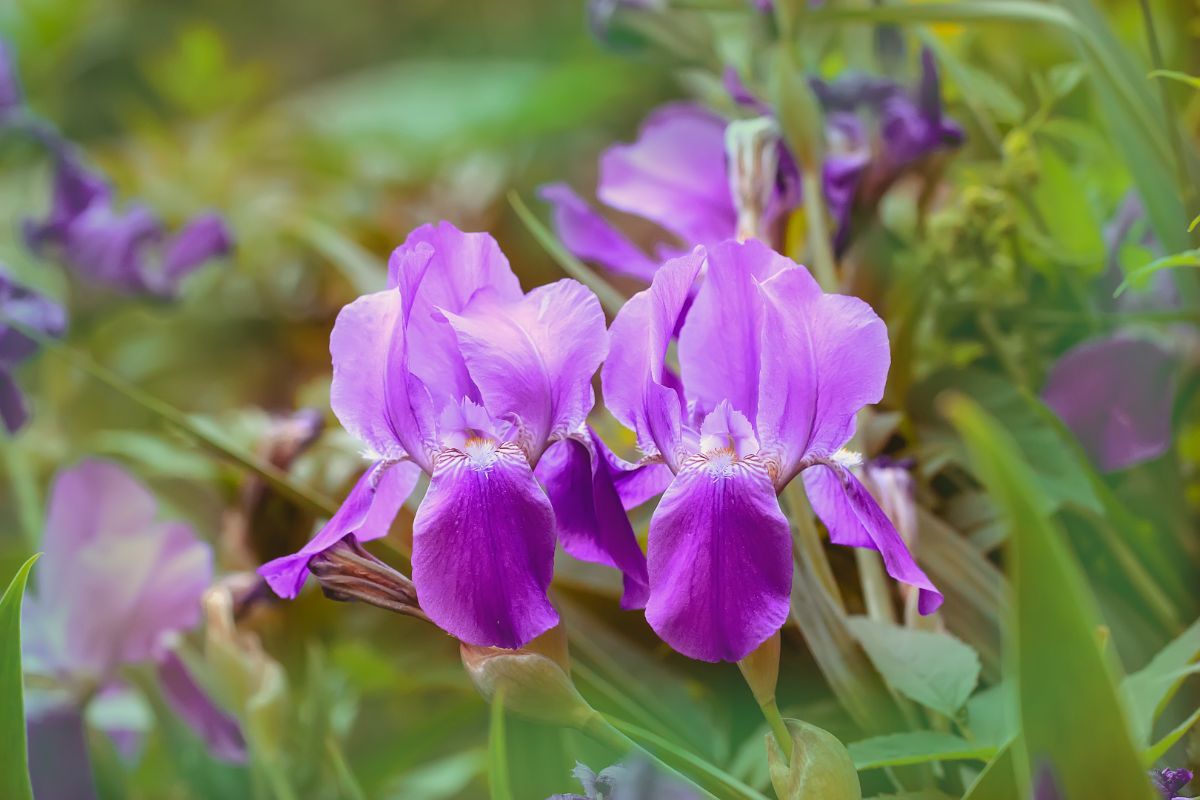
The name bearded Iris was derived from visible hairs that erupt along the fall center of the plant.
With the bearded iris, you enjoy luxurious blooms and beautiful sword-like foliage. The plants are popular and adored for their impressive height and outer and inner petaled flowers.
When growing this plant, see that the soil is moist but well-drained and that the rhizomes stay placed above soil level and get a sufficient amount of sun per day.
The bleeding Iris flowers from May - June and has got a height size of 90cm and a 10cm spread.
14. Hellebores ‘Helleborus spp.’
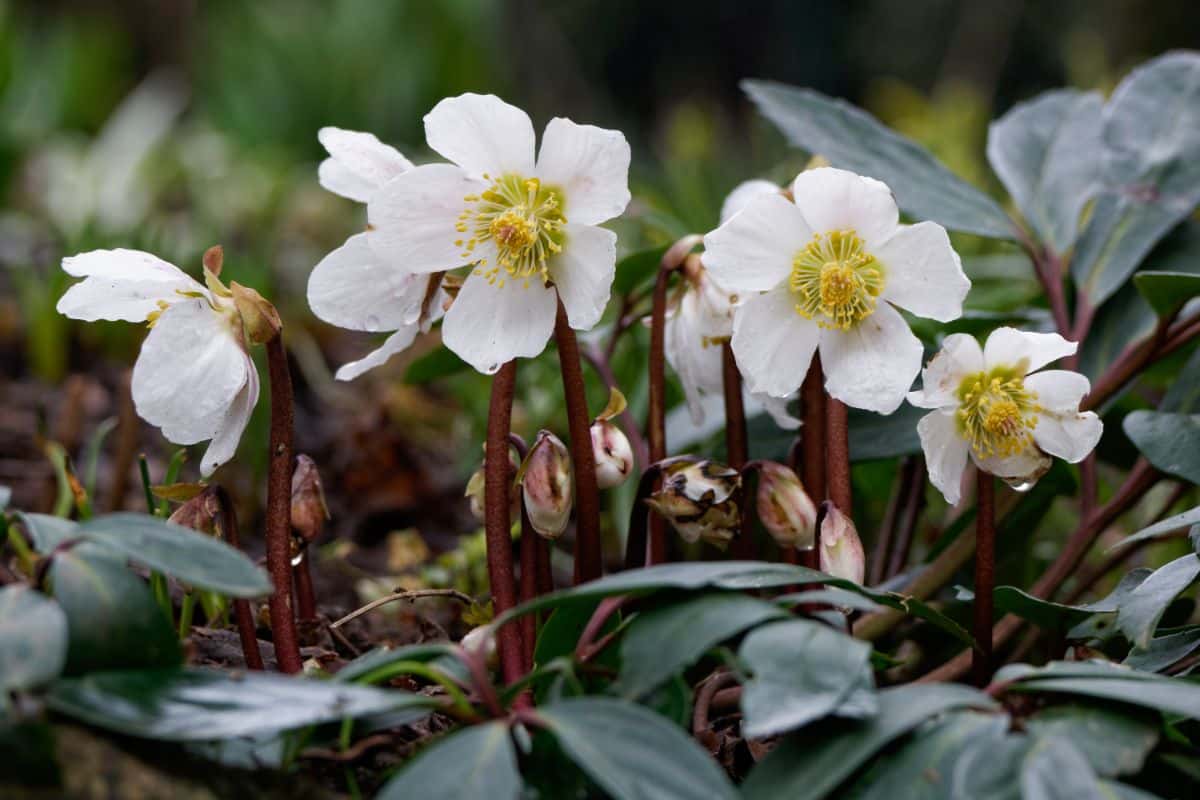
An advantage of the Hellebores plant is the availability of the plant in various colors, sizes, and functions.
For instance, there is the Hellebore Niger if you want an early flowering variety and others that flower late. There are the hellebores foetidus which is a tall variety, as well as other short ones.
Hellebores would begin flowering from late winter straight into spring, displaying brilliant white, pink and dark purple colors.
They are moist soil-loving plants and prefer partial shade. Hellebores flower from January - April and have a height and width size of 45cm, respectively.
15. Heather ‘Erica spp.’
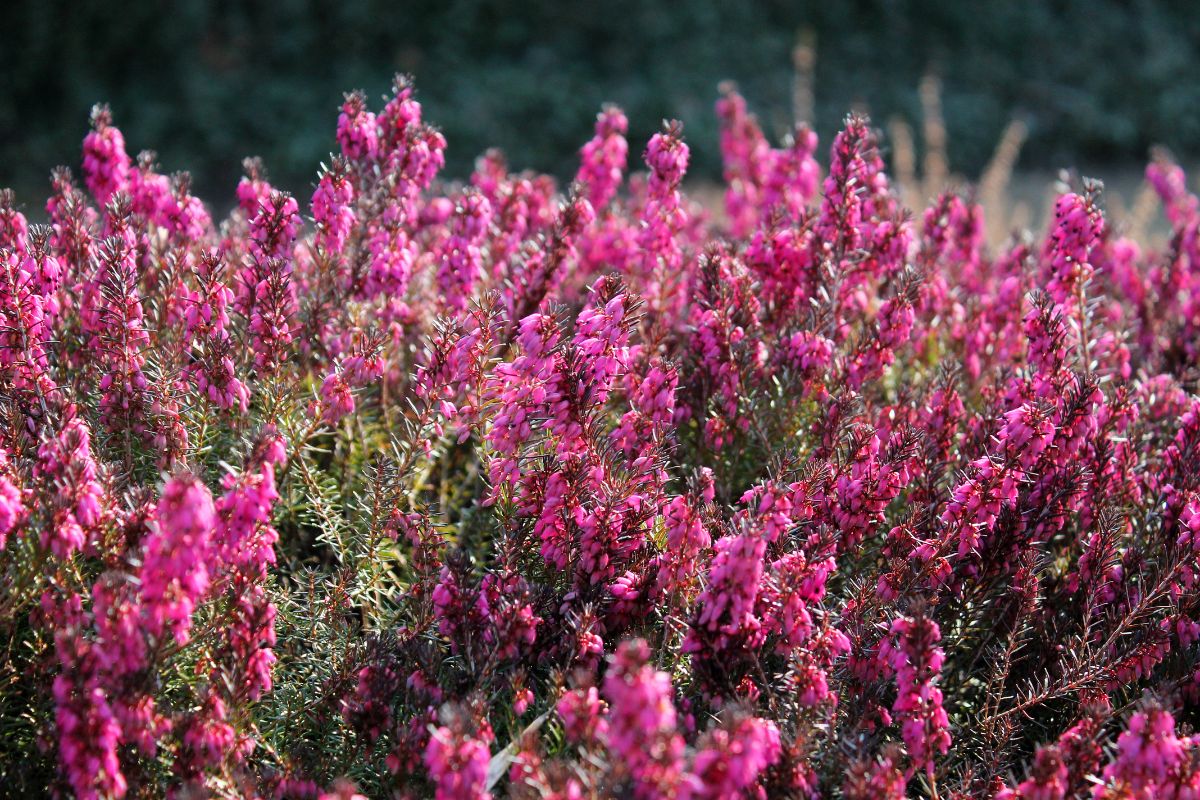
This plant produces a large volume of pollen and nectar in early spring, which makes them regularly visited by bumblebees.
Erica x darlyensis and Erica carnea are examples of spring and winter Heather varieties. They flower long from December - April and have a height size of 50cm and a double spread.
16. Grape hyacinth ‘Muscari’

We know what you might think, but these plants have no ties whatsoever with the regular hyacinths.
Hyacinths are tiny flowering bulbs with striking blue flowers. They make a perfect border or pot plants.
Grape hyacinth needs to be observed closely as they are voracious spreaders. They flower from April - May and have a mature height size of 20cm and a 10cm spread.
17. Winter Aconite ‘Eranthus hyemalis’
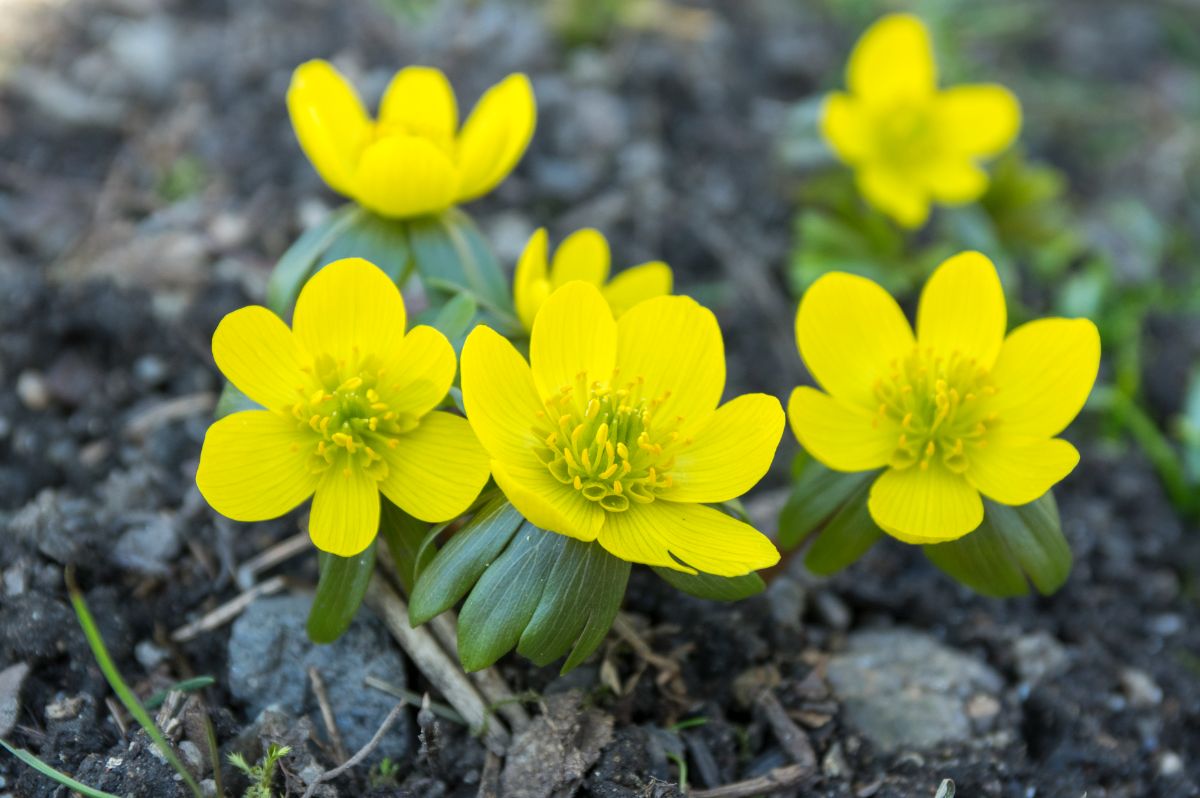
This is an example of an early flowering perennial plant. This sunny yellow flower does best in moist but well-drained soil under sun-part shade light exposure.
They flower from January - February and have a height size of 13cm and a spread of 10cm.
18. Foxgloves ‘Digitalis’
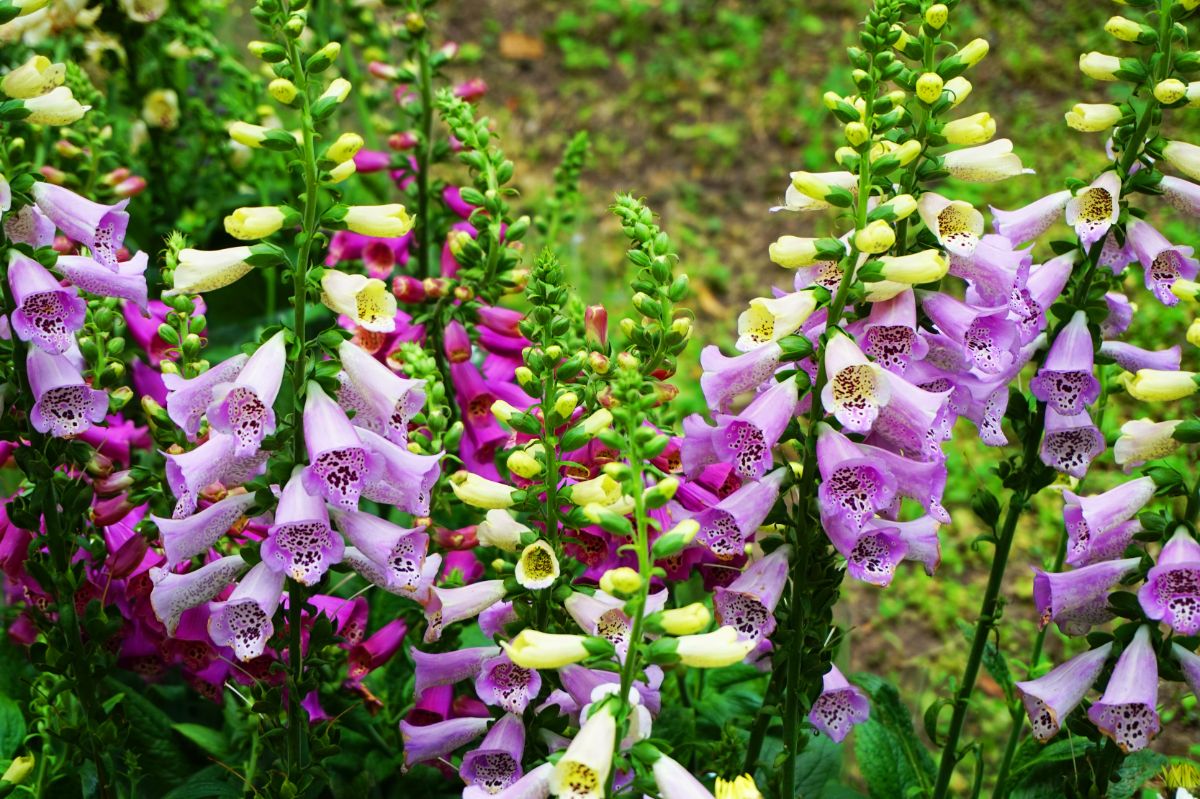
We love the pink-purple color of this plant as well as its tubular shape with the spotted interior.
Foxgloves would naturally flower during late spring straight into summer.
These fantastic plants are available in perennial and biennial varieties. They love moist but well-drained soil plus sun-shade light exposure.
They flower from May - June and have a 1.8cm height size and 90cm spread.
19. Lily of the Valley ‘convallaria majalis’

These perennial plants are naturally low-growing with bell-like immaculate white flowers on arching stems.
This plant spreads quickly and looks extremely great when planted in shady borders.
Growing in moist soil and sufficient shade exposure will establish this plant properly.
They flower from April to May and have a mature height size of 25cm and 35cm spread.
20. Allium ‘Allium spp’
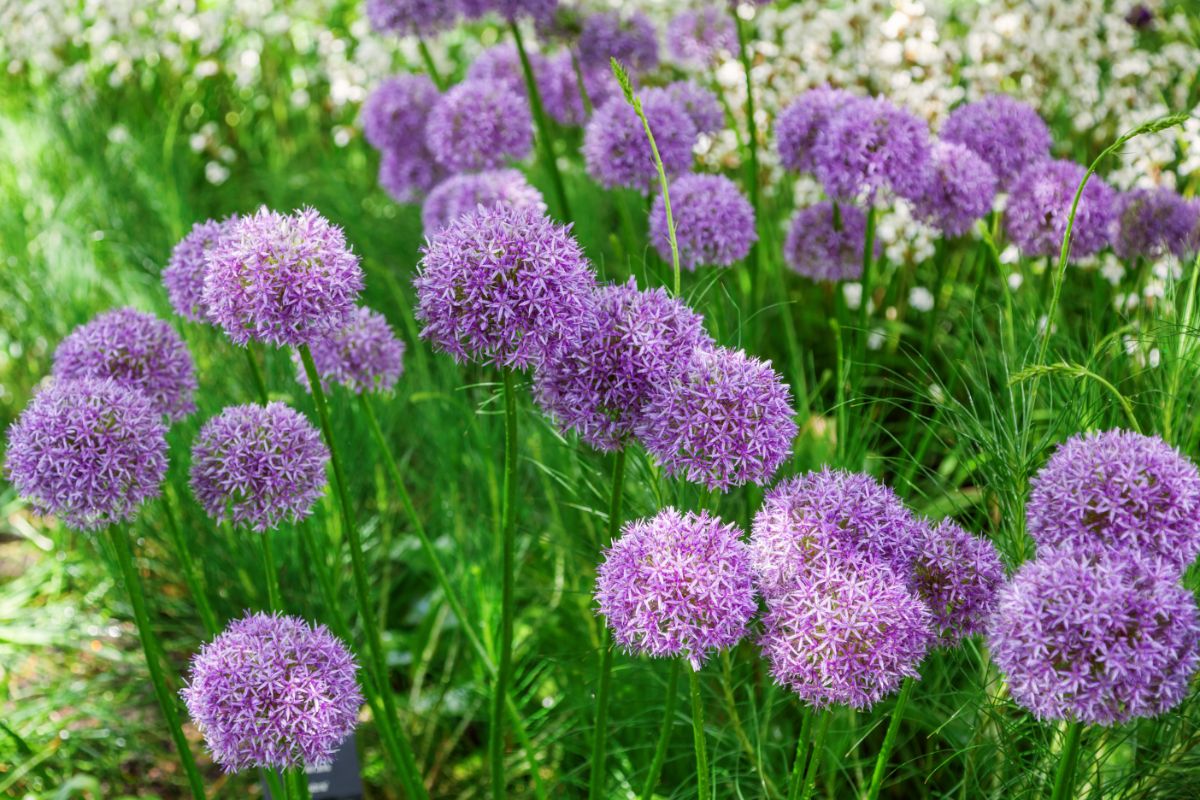
We wrap this up with yet another perennial uniquely shaped, just like a globe.
Alliums typically flower during late spring straight into summer.
Plant these bee-loving plants in moist but well-drained soil and allow them to enjoy total sun exposure.
They bloom from May - June and have a height size of 20cm and 15cm spread.
Conclusion
Looking for flowers capable of making your gardens pop in spring? The list above has got you covered.
Put on your gardening gloves and explore away!




